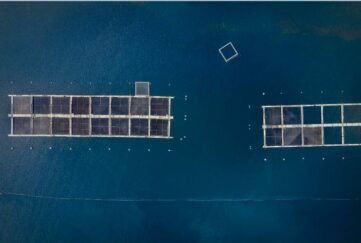Profit collapse hits major Chilean salmon farmer

The big Chilean salmon farmer Salmones Camanchaca suffered a price collapse during the July to September third quarter period and operating revenue fell despite higher harvest volumes, the company has disclosed.
It has blamed lower prices and higher costs as being among the main reasons for the situation.
The Atlantic Salmon harvest volumes totalled 17,760 metric tonnes up 24% compared to Q3 2022, which was aligned with the harvesting plan.
“But the higher harvest volume has not been reflected in sales, as September closed with Atlantic salmon sales volumes of 11,311 metric tonnes (WFE) and inventories of more than 9,000 tonnes (WFE),” says the company.
Salmones Camanchaca’s operating revenue for the quarter totalled US $82.1 million, (£66m) a decrease of 14% over Q3 2022.
The company said the decrease is mainly due to lower sales prices, which were down 13% and 24% for Atlantic salmon and Coho salmon respectively, compared to the same period last year.
It added that the cost of harvested Atlantic salmon (ex-cage live weight) increased by 12% to US $4.69/kg, mainly due to two sites accounting for 70% of harvested volume that were affected by SRS (Salmon Rickettsial Syndrome) outbreaks and sea lice presence which led to increased treatment costs.
However the EBIT per kilogram of both types of salmon all but collapsed during the period. For Atlantic salmon it was US $0.005 this year against $1.78 a year ago and for Coho salmon it was minus $US 0.54 per kg, down from a positive $1.16 in Q3 last year.
The company said the Atlantic Salmon harvest volumes for this year are expected to be between 44,000 and 46,000 metric tonnes WFE, while Coho salmon harvest volumes are expected to be 10,000 to 12,000 tonnes WFE.
Commenting on the Q3 performance, Salmones Camanchaca Vice Chairman Ricardo García said: “This was a very challenging quarter due to the weakness of global demand and its effects on prices, added to costs that absorbed the higher prices of raw material inputs for feed, inflation on services, and SRS outbreaks and sea lice presence that affected harvested fish costs from two sites.
“Despite this scenario, the productive and commercial flexibility to focus on the most attractive formats and markets allowed us to obtain prices above the spot reference.
He added: “Besides the challenges we have for the end of 2023, we observe good health performance, somewhat less cost pressure for early 2024 harvests, and better prices for the following months.”

